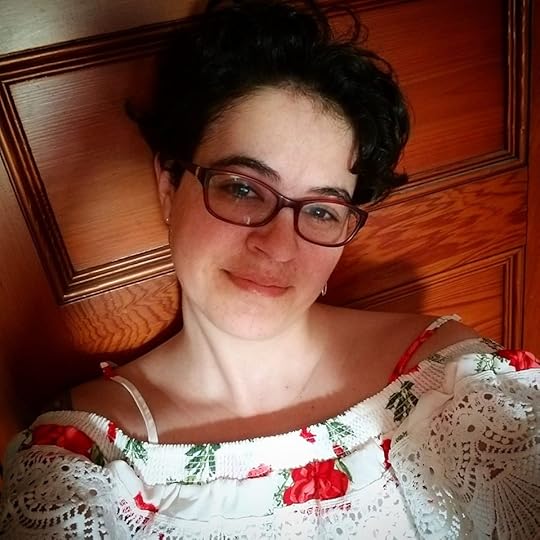Fallen Friday: The Setting
Welcome to another edition of “Fallen Friday!” If you weren’t around for last week’s, this is my new blog series where I talk about the journey I’ve undertaken to get here, my writing, and also about the novel itself as well as its setting! While you can learn this in the book, I figured sharing some of this stuff in advance couldn’t hurt. Fallen isn’t due out until December, and I don’t know if I can keep all this in for that long!
Like I mentioned last week, my novel’s setting is inspired by a mixture of the movie Bright on Netflix and Jim Butcher’s Dresden Files series along with no small dollop of Holly Black’s Tithe, Valiant, and Ironside. While you may or may not recognize all the influences, the most obvious one at the first contact is Bright.
The setting of the Smoke and Magic series addresses a similar question to that movie: what if magic were commonplace, and fantasy races were all real? Now, unlike Bright, the world isn’t/ a post-modern dystopia where the elves live in the fantasy equivilent of The Aerium from Altered Carbon. (Yeah, I know, I’m a Netflix junkie. So sue me.) Instead, society is more or less like it is in the real world. Mostly.
My novels are mostly going to be set in the city of Boston, MA because I live quite close to the city. I haven’t spent a great deal of time there in person due to a combination of finances and physical disability, but if Google Streetview tracked steps like my Fitbit does, I’d have probably clocked several marathons by now. I have also been to the city a number of times (Logan Airport, the Boston Aquarium and museums and zoo, The Royale to see VNV Nation perform, and so on), and I’m a historian who is intimately familiar with the history of the city. I also live in New Hampshire, so the historical New England buildings are hardly foreign territory for me. My family church is with a year or so of the establishment of Old North Church in Boston.
So what does it mean that magic is commonplace in the world?
Well, for one thing, there are degrees in it from Harvard. While you won’t meet her until book two, there’s a character who has a degree in it. Magic is, of course, quite regulated. It’s commonplace insomuch as there are many people who can do it, how magic is used and by whom is tightly-controlled. Particularly things like necromancy (which will show up later in the series). Small things like illusion magic (the fae use it a lot) to alter hair color, eye color, and so on? Not considered much of a big deal in most circumstances, though it can make police work a nightmare if you have no idea what the person really looks like. They have special units for that.
Those with magic are considered “metas.” Some species are entirely comprised of metas (like the aforementioned fae) while others only have the occasional meta. Species like therianthropes are also considered meta since their shapeshifting, while a product of nature, is a form of magic. Metas are, generally speaking, broken up into two categories: active and passive. Passive metas are individuals like therianthropes whose magic is (typically) limited to shapeshifting and healing wounds or a vampire’s ability to exist.
Generally speaking, about 40% of the population is meta, with the bulk of the non-meta population being made up of humanity. While there are many other species in the world, humans reproduce the fastest. Some of the long-lived races, like elves, have few children and typically at more or less a replacement rate since elves can live for centuries. Biology saw fit to ensure they wouldn’t over-populate the world and kill off life on the planet. Most of the species with excessively long natural lifespans have similar parameters to their biology.
So what about things like dragons?
Yes, well, dragons certainly existed, though they were in fact hunted out in the Medieval ages so far as anyone knows. Any who weren’t slain by knights have long since gone into hiding. And just as well for the most part–they were extremely powerful creatures known to cause a great deal of trouble for folks. What with the hoarding and such. Not exactly ideal neighbors a lot of the time.
So what does that mean for the day-to-day?
Well, you still have computers and cell phones and Internet. The world still exists as we expect it to on average. However, there are folks with heating and cooling handled by runes instead of forced air. They still require charging and maintainence, but it’s cheaper that way. Also, there are flight rules for winged creatures communting. And there are cars designed for bigger creatures. And, you know, centaur standing room on trains and busses.
Some things like World Wars are also a little different, but I don’t want to get too far into that in this installment.

E. Prybylski has been in the publishing industry as an editor since 2009, starting at Divertir Publishing and eventually partnering with her close friend, Richard Belanger to begin Insomnia Publishing.
Ever since childhood, E. has been an avid reader and writer of fantasy. The first chapter book she remembers reading is The Hobbit, followed swifty by most of Anne McCaffrey’s Pern series. In high school, she perfected the skill of walking while reading without slamming into anyone. Mostly.
When she isn’t reading or writing, E. Is an active member of the Society for Creative Anachronism and has a B.A. in European history from SNHU. In addition to her many historical pursuits, E. is a musician of multiple instruments, a cat mom, and a loving wife to her husband, J. E. also speaks out for the disability and chronic illness communities being a sufferer of chronic migraines and Ehlers-Danlos Syndrome.
__ATA.cmd.push(function() { __ATA.initDynamicSlot({ id: 'atatags-26942-60cc59260e7f5', location: 120, formFactor: '001', label: { text: 'Advertisements', }, creative: { reportAd: { text: 'Report this ad', }, privacySettings: { text: 'Privacy', } } }); });


